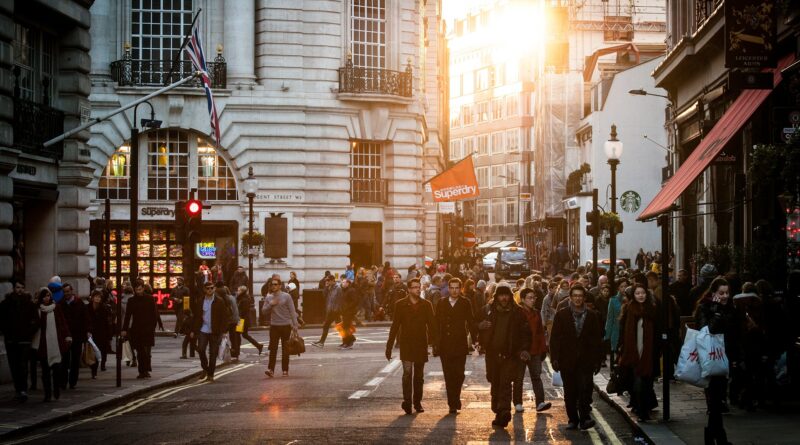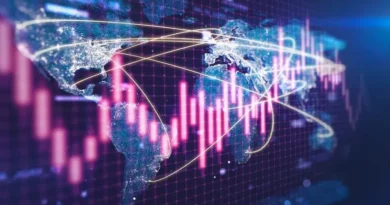The great escape from passive ETFs. Here are the funds that are taking advantage of it
The growth of actively managed exchange traded funds (ETFs) and the enduring popularity of low-cost ETFs are causing unprecedented pressure for funds stuck in the middle of these two camps, at least in the United States.
All this has weakened flows into the mid-range of ETFs this year.
In October, the outlook darkened further as the mid-market saw a net draw of $4 billion, even as active and low-cost U.S.
ETFs attracted $39 billion, according to data from State Street Global Advisors.
“We have never seen [this pressure] to this extent [before],” said Matthew Bartolini, head of SPDR Americas research at SSGA.
“Investors have always been price sensitive,” Bartolini added, while at the same time there is “more confidence in owning active ETFs in your portfolio.
There are more of them, there is more choice and there are many more products that have an identifiable track record.” SSGA data suggests that, since 2017, low-cost passive ETFs have accounted for an average of 62 percent of all ETF inflows in the US, active ETFs have accounted for 12 percent, and the rest (i.e.
higher-cost passive ETFs) expensive) 26 percent.
Its definition of “low cost” is an internal classification, composed of “core building elements” that are cheap compared to the median of their peers.
“We are looking to delve deeper into funds where inflows are likely to be cost-driven,” Bartolini said.
Assets have attracted 28 percent of all inflows into the United States this year, surpassing 2022's annual record of $107 billion, Bartolini said, representing a "massive increase in market share." With low-cost liabilities holding steady at 61 percent, higher-cost other liabilities received just 11 percent of inflows, a far cry from the 45 percent of U.S.
ETF assets of $3.2 trillion in dollars, representing.
Indeed, in October their share turned negative, with low-cost passive ETFs getting a 66 percent share of the total $35 billion inflows, actives 46 percent, and all other ETFs combined minus 12 percent.
percent.
Bartolini said actively managed ETFs were “gaining traction,” helped by the ongoing conversion of mutual funds to exchange-traded equivalents and derivatives-heavy vehicles like the JPMorgan Equity Premium ETF (JEPI) that “aren't really active, they are just modifying a risk factor.” Elisabeth Kashner, director of global fund analysis at FactSet, said data on U.S.
ETF inflows since the start of the year were “as we see quite often, populated by low-cost core portfolio stocks,” such as the Vanguard S&P 500 ETF (VOO), the iShares Core S&P 500 ETF (IVV), and the Vanguard Total Bond Market ETF (BND), which each have a total expense ratio of just 3 basis points.
Alongside these traditional giants, the iShares 20+ Year Treasury Bond ETF (TLT) has risen sharply in popularity this year, with inflows of $20.9 billion bringing its assets to $42.2 billion, despite its weak performance with losses since the beginning of the year of 8.2 percent.
“Investors are having fun shooting themselves in the foot this year with TLT.
He only meted out punishment,” Kashner said.
Despite its 15 basis points higher cost, TLT is still among the cheapest 20 percent of U.S.
ETFs, according to FactSet.
By far the most popular active funds were JEPI, with net inflows of $12.7 billion, and its sister JPMorgan Nasdaq Equity Premium Income ETF (JEPQ), with $5.4 billion.
Overall, actively managed ETFs have absorbed $88 billion since the beginning of the year.
“There are many forces that are fueling interest in JEPI.
Some of it is more social, emotional than economic,” Kashner said, given the nature of the hedge fund called as a defensive play on the U.S.
stock market.
According to FactSet data, only one of the 20 best-selling ETFs in the U.S.
so far this year is a passive fund that charges more than 15 basis points as TLT: the Invesco S&P 500 Equal Weight ETF (RSP), which costs 20 basis points and raised $7.2 billion, ranking 12th on the list.
Despite this, Bartolini believed that mid-sized ETFs may be about to reemerge at least to some extent due to market dynamics.
“We have seen an extension of the stock market rally,” as “risk sentiment has improved,” he said.
“Seasonality typically benefits other funds other than these two [low-cost and active] ones,” Bartolini argued, given annual tax loss harvesting and the potential for a year-end rally.
Kashner wasn't even convinced that passive ETF buyers had suddenly become more price-sensitive and obsessed with only buying the cheapest funds.
Its data shows that more and more ETFs increased their fees rather than reduced them in the first half of 2023, an unusual event that last occurred in 2017 and is not indicative of a cheap investment environment.
Referring to Cathie Wood's expensive Ark Innovation ETF, Kashner said: “people are willing to pay for ARKK, JEPI etc.
There are many investors willing to pay above the market rate for something.” © The Financial Times Limited 2023.
All rights reserved.
It may not be redistributed, copied or modified in any way.
The Financial Times is not responsible for the accuracy or quality of this translation.
Money.it has rights to republish some limited articles from the Financial Times.
This is not a live feed of Financial Times content.




